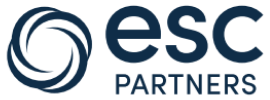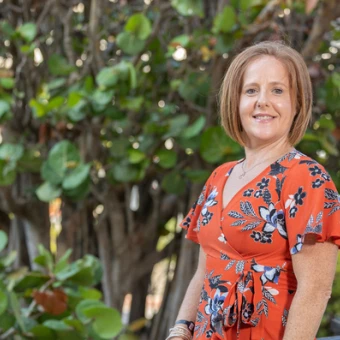Four key first steps to finding the perfect billing software for your city’s needs
You need the right billing software. You know this. But you also know you need help finding the right one, implementing it, and supporting it across the years and across the public works/city enterprise.
We can help you with that implementation and support, but first you’ve got to figure out exactly what you need from the software itself. (Don’t worry. While this process may be a bit tedious, it’s not actually a difficult one to conquer.)
To get started, here are four key steps you need to think about before we sit down for a chat. You do these four things, and you will come up with a road map of points to compare all the available billing options and select just the right software to balance your issues.
Step one: Don’t assume you know the problems; ask everyone involved for honest feedback.
In all the municipal layers, utility billing, specifically, has a massive number of variables around pricing (kWh, TOU, etc.), along with distinctive needs based on compliance, PUC requirements, and even allowed additional revenue streams. So, sit down and take a look at your bill today. What could you add? What needs to be removed? Could you adjust the language to make it clearer to the end user? Do you need billing software that can be locked up front, or do you need a certain amount of timely flexibility?
Ask questions of everyone and every point along the billing process way from meter reads to online payment portals. A lot of the people in this chat will have more hands-on experience than you and see more every day. You may think you know what’s going to come out of this exercise, but assumptions can also be problematic. You’ll have cleaner data if you come in with a clean slate and a sense of curiosity.
And write everything down. Every note. Every question. Everything that seems confusing to your team and to customers alike.
Step two: Take the time to aggregate that unstructured data.
You’re going to find some insights overlap a lot and are mentioned a number of times. Group that feedback together. (Example: 12 CSRs mentioned that customers are often confused by the explanation of TOU rates on the bottom of the bill. And they call for details, eating up expensive phone hours with an in-person rep.)
You’re also going to find that some insights are one-off and likely the product of a singular situation that hasn’t been repeated. (Example: Customer complained that the fire department didn’t come fast enough to address the pole top transformer fire; note the customer did NOT call the fire department or inform us of the emergency when he called about his bill overcharge on X date.)
Take anything that has three or more instances of repeat and keep them in hand. That might be as easy as putting it on an Xcel spreadsheet. Move the two-or-less others to a support folder for reference as needed.
Sorting through and making a grouped hierarchy of that feedback will help you tackle step three.
Step three: Build a flow chart of the billing process.
Show the journey to billing from the water/gas/electric meter to the customer. You can work it like a simple flow chart down the center following the data to the bill and out the door.
Beneath, list absolutely all the teams, processes, and software involved in each step. Above, put in references to that gathered and grouped unstructured data with arrows back to connected problem areas.
Then trace it back behind the meter to supporting teams as well.
Sit down with each team in the process and check what you’ve done. Does it cover everything on their end? Would they add anything? Are there gaps?
Note everything. Re-edit and do this process more than once for clarity and accuracy.
Step four: Take that flow chart software shopping.
By examining your current issues and gaps, you’ve now spent a lot of time thinking about what you need this new software to do—and to do well. Your unstructured data is telling you a ton: Have you been having accuracy issues? Is your call center inundated with complaints about impossible or inaccurate numbers? Is all your time taken up with putting out fires around inefficiencies or gaps in data sharing? Then you need billing software that addresses that and puts accuracy first in the billing equation—followed by how easy is it to integrate to your system and processes and how user friendly is it for your service representatives to use and understand (i.e., to pick up quickly)?
Solving those points will solve the recurring issue your team told you about 12 times in this process. So, now you know to shop for accuracy and ask questions about data conversion, data migration, and how that data is scrubbed and re-inserted into the processes as the top conversation when looking for billing software and connected SaaS services and solutions.
Every moment of negativity on your flow chart should correspond to a positive benefit listed in the software or packaged billing service you’re shopping for during your evaluation and selection process. If you start from the details that solve the pain points specific to your project, you will find the larger topical areas that are often tossed around in generic sales conversations—customer satisfaction boosts, flexibility and scalability, targeted marketing—will align naturally and easily with fewer iterations because you will not have to unearth what that all means in practice. You already know because you did the homework on it.
Editor’s note: Need help? Not only can our team at ESC Partners help you update from sunsetting legacy software and support your customer/citizen care and billing, but we’d also be happy to help you build and sort that flow chart and show you how to apply it when shopping for the right SaaS or cloud solution. From evaluation and selection to data migration, system set up, training, go live, and post-implementation support, we’ll be here for you every step of the way with a toolbox full of solutions built on the experience and quality of Oracle software and supported by our dedicated ESC staff around the globe and around the clock.
ESC Partners is building smarter communities from utilities work to public works with solutions in the Oracle Cloud. Let us help you take full advantage of all the Oracle SaaS options available or walk you through our personalized Care-as-a-Service (CaaS) solutions. Just send us a note via the contact form, and we'll circle back within 48 hours.
utility billing, legacy billing, Central Square, Harris AUS, Software as a Service, SaaS, customer billing, utility customer billing
Related Content
-

How you can stop worrying (about implementation) & love cloud adoption
Our SMEs gives you seven steps to smooth the way.
-

Make your future years of software service 10x easier with the support of ESC PARTNERS APPLICATION MANAGED SERVICES
We'll help you make the most of your long-term software/SaaS investment.
-

PRODUCT GUIDE: ESC Partners Customer Care 360 (CC360)
Get deep dive details on various solution elements from call centers to staffing...





